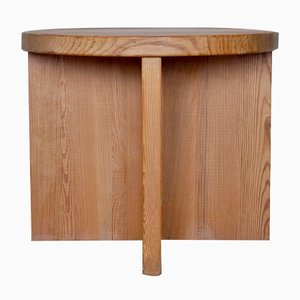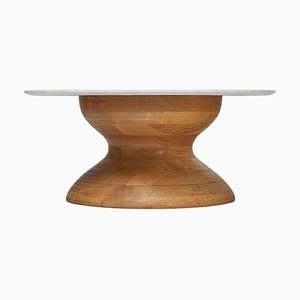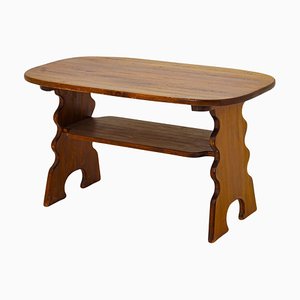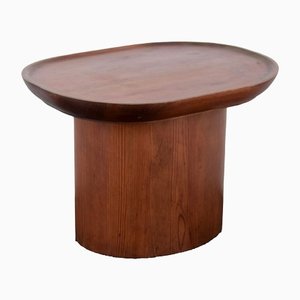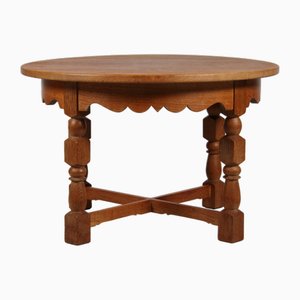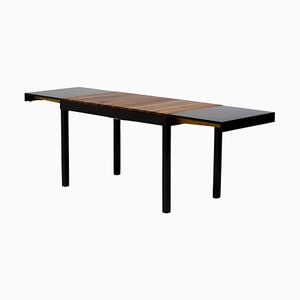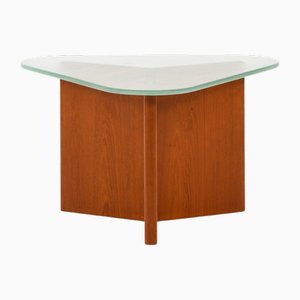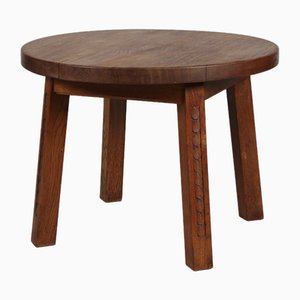
Swedish architect and industrial designer Axel Einar Hjorth (1888-1959) was a major contributor to the burgeoning Swedish design culture that began to be recognized internationally in the 1920s. He was also instrumental in introducing Swedish decorative arts and architecture to the United States.
Axel Einar Hjorth was born in 1888 in Krokek outside Norrköping, Sweden. In 1908, Hjorth relocated to Stockholm to study architecture and design at Högre Konstindustriella Skolan, which was later known as Konstfack. After the death of his foster-father who came into Hjorth's life at the age of twelve, he discontinued his studies. Although Hjorth never graduated, his education was enough to acquire a position designing furniture and interiors for Stads Hantverks Förening for the city of Stockholm in 1918. Hjorth’s designs from this period were inspired by neo-classism, often referred to as Swedish Grace.
Throughout the 1920s, Hjorth worked with various manufacturers including H. Joop & co, Myrstedt & Stern, Jonssons, and Svenska Möbelfabrikerna in Bodafors. Notably, in 1923 Hjorth was the head of the assembly section of the Jubileumsutställningen (Jubilee Exhibition) in Gothenburg—an exhibition which, the British critic P. Morton Shand characterized as the beginning of Swedish dominance in the decorative arts. Wishing to spread Swedish design further around the world, Hjorth, together with his contemporaries, Carl Hörvik (1882-1954) and Carl Malmsten (1888-1972), represented Stockholm at the exhibition of contemporary Swedish Decorative Arts at the Metropolitan Museum in New York 1927. This exhibition was instrumental in introducing Swedish decorative arts to America.
From 1927 until 1938, Hjorth was the chief architect and designer at the department store Nordiska Kompaniet (NK) in Stockholm—which was known as one of the most important producers of modernist furniture in Sweden. During this time, Hjorth designed both public and private interiors, and worked with international clients including Iranian royalty. His first project for NK was a stand for the World Fair in Barcelona in 1929, during which he exhibited the Louis Cabinet and Caesar Cabinet. In the 1930s, Hjorth designed furniture out of pine meant for serial production for the summer houses he designed. These (usually unlabeled) pieces mixed handicraft with international modernism, and were named for Stockholm's archipelago islands including Blidö, Sandhamn, Toro and Lovö.
Hjorth's designs—from the luxuriousness of neo-classicism to the severity of functionalism—are sharply distinct in style, materials, and character. Unike many of his contemporaries however, Hjoth did not conform to the socially-oriented ideas produced by Svensk Form (the Swedish Society of Crafts and Design). He often incorporated playful ornamentation from different historical periods from which he was inspired, such as French Art Deco—using mixed exotic woods, bright colors, and textiles. Often omitted from historical discourse on early-20th century Scadninavian design, Hjorth has become a rather unknown entity in the design world and his achievement are under-appreciated. The lack of published or archived works contributes to his anonymity and obscurity. Although Hjorth did not follow the design narrative of the era, he certainly played a significant role in the development of Sweden’s international design reputation, his style eventually absorbed into design characteristics of modernism in Sweden.
Over the course of his career, Hjorth exhibited his works at many international exhibitions including the Stockholm Exhibition in 1930, the exhibition at the Dorland House in London in 1931, and the World Fairs in Chicago (1933), Brussels (1935), Paris (1937), and New York (1939). Hjorth also prepared and curated annual exhibitions for NK.
Hjorth passed away in 1959 in Stockholm.

